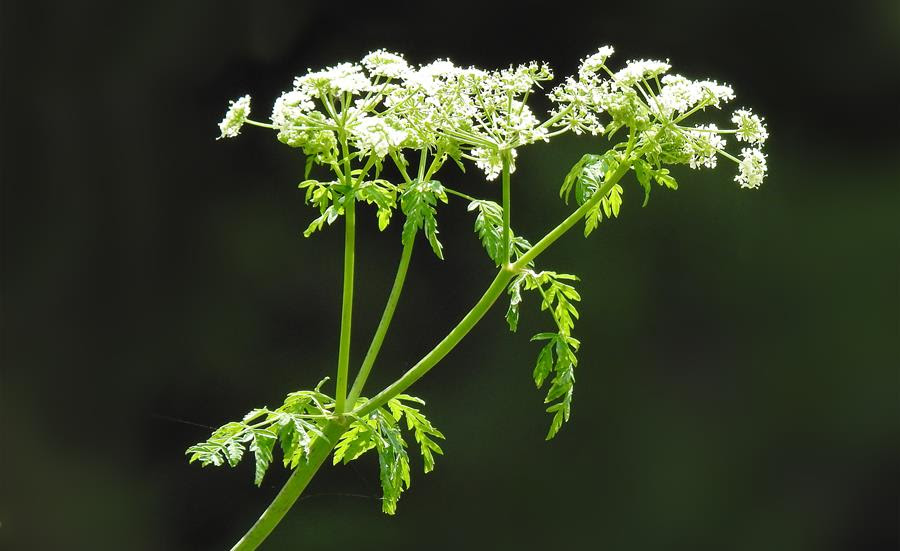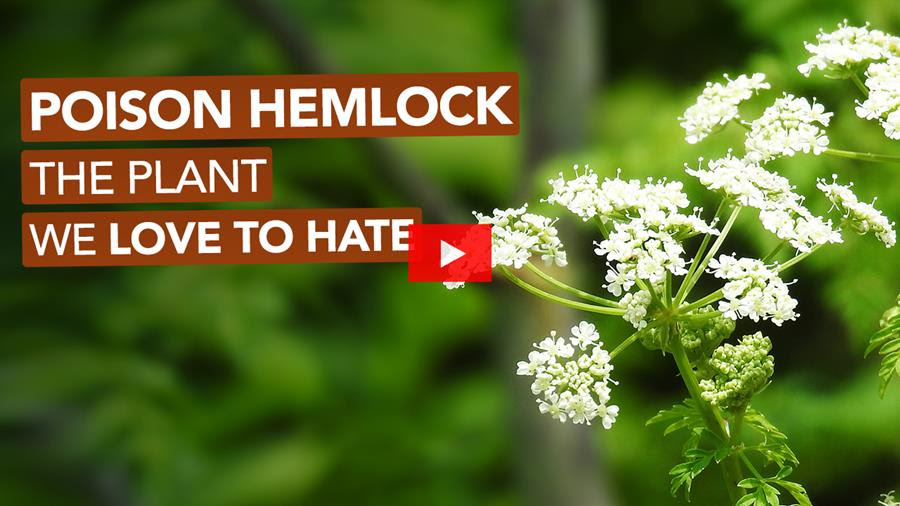Tag: herbal medicine
Gathering and Preserving the Herbal Bounty: A New Video Series
The Herb Society of America Blog
By Susan Belsinger
Greetings and Happy Autumn!
 I am writing this on the evening of the full harvest moon—it is shining bright in the night sky just over the treetops. We are also celebrating the Autumnal Equinox. I know that fall is here by the feeling in the air—cooler nights—and needing to grab that extra blanket; the smells are different—moist, earthy, and leafy; the departure of the hummingbirds since the jewelweed blooms are fading; the slowing down of plant growth in the garden and the ripening of others—herbs are maturing, flowers are showing off their last hurrahs, and many plants are producing seeds. It is time for gathering the bounty and celebrating the harvest!
I am writing this on the evening of the full harvest moon—it is shining bright in the night sky just over the treetops. We are also celebrating the Autumnal Equinox. I know that fall is here by the feeling in the air—cooler nights—and needing to grab that extra blanket; the smells are different—moist, earthy, and leafy; the departure of the hummingbirds since the jewelweed blooms are fading; the slowing down of plant growth in the garden and the ripening of others—herbs are maturing, flowers are showing off their last hurrahs, and many plants are producing seeds. It is time for gathering the bounty and celebrating the harvest!
I am simply delighted to share some news with you. Last harvest season, I made three educational videos featuring “Gathering and Preserving the Herbal Bounty” for members of The Herb Society of America.
These videos give…
View original post 499 more words
Healing from the Trees: Spruce Resin Salve Recipe
Since moving to our new homestead a few years ago, I’ve been working to build a local material medica–that is, learning about all of the medicinal plants, herbs, and trees here on our 5-acre property. This also, of course, means growing a lot of my own herbs but also learning everything I can about the uses of the plants/trees already present on the land. This post is a follow-up to my Spruce post from a little while ago to share some primary ways of working with spruce: A Spruce Resin Salve (also known as a Spruce Gum and Spruce Resin salve) with bonus fire-starters from the process!
 Many conifers produce a tarry, sticky resin or sap that has a range of uses: as a binding agent or glue, as a medicine, as gum you can chew, as incense, as a fire-starting tool, as a waterproofing agent…
Many conifers produce a tarry, sticky resin or sap that has a range of uses: as a binding agent or glue, as a medicine, as gum you can chew, as incense, as a fire-starting tool, as a waterproofing agent…
View original post 1,880 more words
Sacred Trees in the Americas – Black Willow (Salix nigra) – Magic, Mythology, Medicine and Uses
 Me under a giant fallen, but yet living, willow tree!
Me under a giant fallen, but yet living, willow tree!
One of my earliest memories was of three ancient black willow trees that were down by a little creek where I lived. Although we lived on a busy crossroads in town, the stream and willows in the backyard were a quiet place, guarded by those three old willows. They looked like gnarled old women, sitting by the edge of the stream, their long branches swaying gently in the wind. When the stream waters would rise, sometimes they would look like they were wading there, branches swaying in the current. The Black Willow is an incredible tree, the largest Willow native to North America, and a great tree to get to know.
The Black Willow is also known as the Swamp Willow, Sauz, Dudley Willow, or the Gulf Black Willow. It is native to all of Eastern North America, from the…
View original post 2,181 more words
Wildcrafting Your Druidry: A Local Materia Medica and Herbalism Practice
As we continue to explore the concept of wildcrafting druidry and sacred action that is, developing a spiritual practice and daily life that is fully localized and aligned with nature right outside your door, it is a useful time to consider the role of herbalism and developing a local materia medica. In herbalism terms, a materia medica is a body of herbal and plant knowledge for the curing of diseases and the promotion of good health. For example, any book on herbalism that includes entries on herbs and their healing properties is a materia medica. By starting to develop a local materia medica for your area, you can learn more about the incredible healing properties of plants in your area and develop a sacred connection with them. You can start entering into a mutually beneficial, reciprocal relationship with the land and support your own health–this is because not only are…
View original post 1,752 more words
Poison Hemlock — The Plant We Love To Hate


Poison hemlock gets an incredibly bad rap these days.
It’s weedy. It’s aggressive. And it’s lethally toxic.
Here in the United States, poison hemlock grows in almost every single state. Because many of us will inevitably encounter a naturalized population of poison hemlock, it’s important that we learn its key features and its effects on the human body.
The trend these days is to write scathing articles about poison hemlock where personal feelings eclipse objective information. Today, however, I’ll offer something different.
In a new video, I don’t get too angry talking about poison hemlock, but I instead try to remain fairly neutral when discussing its attributes.
If you’re interested in learning more about one of the most toxic plants in the world, check out the brand new video!


Last year, I stumbled upon a pileated woodpecker nest for the first time. Exactly one year later, I encountered a second site in a different location. To read about my recent experience, and to view more photographs of the nest, check out the latest Instagram post!Click to view post
Thanks for reading and watching, and thanks for your continued support!
-Adam Haritan
Sacred Trees in the Americas: Tamarak / Larch – Larix laricina – Magic, Medicine, and Mythology
I remember when I first saw a Tamarack tree. It was growing in a bog where I was hiking in late fall. I looked at the Tamarack tree in its golden splendor and wondered if the tree was sick or had gotten too wet–was this confier dying? It had knobby cones and branches, sitting there looking like it was in its death throes. When I commented on it to my friend, she responded, No, that’s just the tamarack tree, a friend of mine said, and we examined the tree growing on the edge of a beautiful wetland. Sure enough, a few weeks later, the tree was bare for the winter and only grew back in the spring. The Tamarack tree has a special place in the ecology in North America, especially as a mid-succession tree in very wet and swampy areas.
The Tamarack tree is known by many names: the…
View original post 1,782 more words
Sacred Trees in the Americas – The Magic, Medicine, and Uses of the Tulip Poplar (Liriodendron tulipifera)
One of the most majestic experiences you can have with trees is being surrounded by old-growth Tulip Poplar trees. Tulips grow extraordinarily tall and straight, with thick gray trunks and spreading roots. You feel like you are in a cathedral, standing under these magnificent trees. The tulip trees get their name both from the leaves–which are shaped like a tulip and from their flowers–beautiful, large, showy orange and yellow flowers that look just like a tulip. You can find these trees easily in June as the showy tulip leaves begin to drop to the forest floor. They are also easy to spot in the winter–you can look up and see the remains of the tulip flowers, gone to seed, throughout the winter months–they look like little cups reaching up to the heavens, a beautiful sight.
We have one such grove of tulip trees in a local park near here–a local…
View original post 2,603 more words
Sacred Trees in the Americas: Flowering Dogwood (Cornus Florida) Magic, Medicine, and Mythology
With the advent of Beltane, it is an excellent time to share about the magic and sacredness of the dogwood tree–a tree that is in bloom across the landscape this time of year. I feel like dogwood is one of those trees that everyone knows, but nobody takes the time to know well. In all of my time in the druid community, when people talk about their favorite trees, I don’t think I’ve ever heard dogwood mentioned. She’s a quiet and unassuming understory tree, and after her spring show of white or pink bracts and yellowish tiny flowers, she fades into the rest of the forest. And yet, in studying her medicine and ecology, we can gain so much from this wonderful tree.
Dogwood is a popular tree here in North America, both as a native tree found in the understories and edges of Oak-Hickory forests throughout its wide range…
View original post 2,370 more words
How to Make and Work with Rosemary Oil in Your Apothecary – Floranella
You have probably heard that St. John’s wort oil is incredible for muscle aches and pains, but did you know that rosemary-infused oil can also work wonders? Not everyone has access to fresh St. John’s wort when it’s flowering at just the right stage for making oil, but most people have access to rosemary. Even if you don’t grow it, you can find it in the spice or produce aisle at your local grocer. It won’t turn the oil that brilliant red color, but it will be effective! Let’s talk about how to make a rosemary oil that can really work.
To make your rosemary oil, you’ll want to first dry your rosemary. Strip the leaves from the stems and lay them out on a drying rack or towel-lined cookie sheet. Allow them to air dry until they feel brittle and will break easily when you try to bend them…
View original post 441 more words




You must be logged in to post a comment.